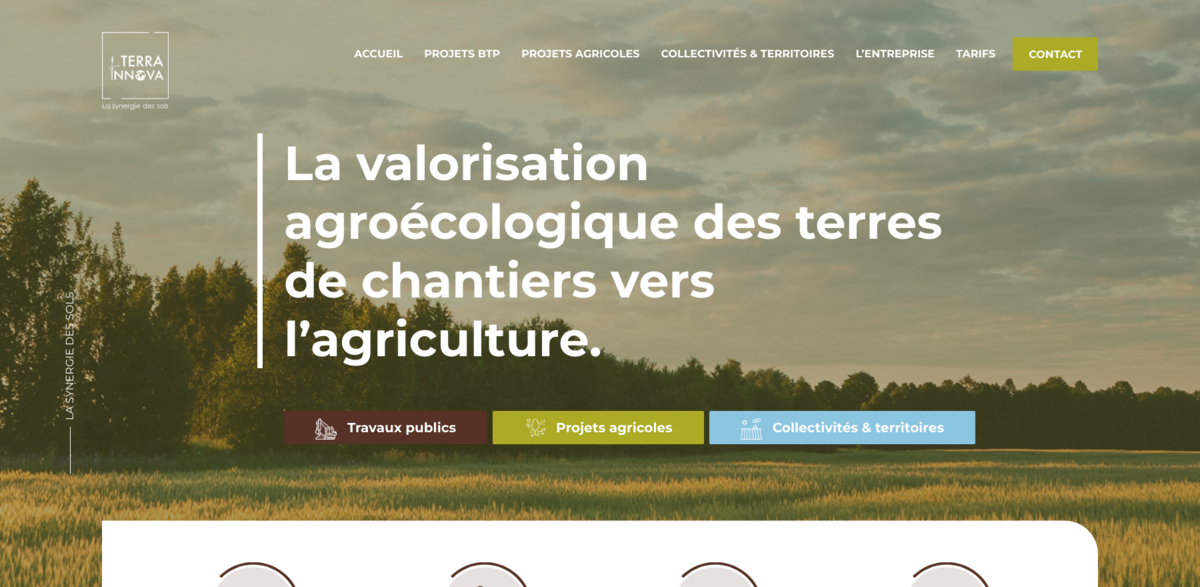What Is the Agroecological Valorization of Construction Soils?
Imagine turning what’s often seen as waste—excavated soils from construction sites—into a real asset for agriculture and the environment. That’s exactly what Terra Innova does. By analyzing and transforming these non-polluted soils, they recreate fertile grounds for farmers and help redevelop local territories. It’s a smart, circular economy approach that breathes new life into construction waste, turning it into resilient soils and landscapes. Instead of letting these soils be buried or dumped illegally, Terra Innova gives them a second chance to support agriculture and biodiversity.
The Main Benefits of Valorizing Construction Soils
This approach isn’t just good for the planet—it’s practical and beneficial on many levels:
- Waste avoidance: Fine soils, formed over millions of years, are preserved instead of being buried forever.
- Positive environmental impact: Soils initially destined for landfill instead improve agricultural fertility and support agro-ecosystems.
- Cost reduction: Local valorization within 20 km of construction sites cuts evacuation expenses.
- Free for farmers: The process improves long-term profits without any cost to them.
- Supports biodiversity: Creating hedgerows and terraces fosters habitats for beneficial species.
How Terra Innova Supports Agricultural Solutions
Terra Innova’s expertise goes beyond just moving soil around. They thicken soils, establish hedges on embankments, restore uncultivated plots, and apply mineral amendments to improve soil texture and fertility. These efforts help combat erosion, enhance water retention, and enrich depleted soils. The result? More productive, sustainable farmland that benefits both farmers and the environment.
Managing Construction Waste with a Circular Economy Mindset
Instead of treating excavated soils as mere waste, Terra Innova treats them as valuable resources. They handle everything—from evacuation and treatment to traceability and regulatory compliance. This ensures that soils are safely and efficiently transferred from construction sites to agricultural plots. The entire process is monitored over several years, guaranteeing successful integration and long-term benefits.
Creating Resilient Landscapes and Agro-Systems
Valorized soils don’t just improve fertility—they help shape landscapes that resist environmental challenges. By modeling terrain with terraces and embankments, and planting hedgerows, Terra Innova creates natural barriers against water runoff, wind, and excessive sunlight. These features also serve as sanctuaries for beneficial biodiversity, promoting a balanced and thriving ecosystem.
Project Impact on Sustainable Development Goals (SDGs)
- SDG 2: Zero Hunger – Enhancing soil fertility supports sustainable agriculture and food security.
- SDG 11: Sustainable Cities and Communities – Promotes responsible waste management and land use.
- SDG 12: Responsible Consumption and Production – Encourages circular economy practices.
- SDG 13: Climate Action – Reduces environmental impact by preventing illegal dumping and soil degradation.
- SDG 15: Life on Land – Supports biodiversity through habitat creation and soil restoration.
Where and How Terra Innova Operates
Operating across regions like Brittany, Île-de-France, Hauts-de-France, Normandy, Pays-de-la-Loire, Nouvelle-Aquitaine, Auvergne-Rhône-Alpes, and Occitanie, Terra Innova offers localized solutions. They analyze soils meticulously to create the best substrate for agricultural use, organize logistics for soil transfer, and ensure regulatory compliance. This local focus not only reduces costs but also strengthens community ties and promotes sustainable land management practices.





















